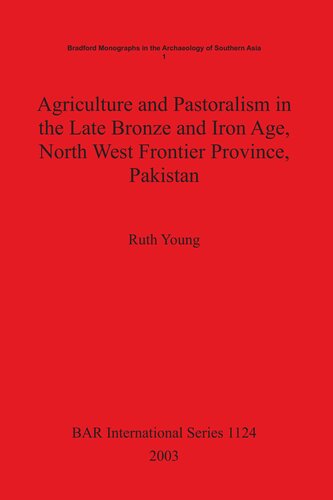

Most ebook files are in PDF format, so you can easily read them using various software such as Foxit Reader or directly on the Google Chrome browser.
Some ebook files are released by publishers in other formats such as .awz, .mobi, .epub, .fb2, etc. You may need to install specific software to read these formats on mobile/PC, such as Calibre.
Please read the tutorial at this link: https://ebookbell.com/faq
We offer FREE conversion to the popular formats you request; however, this may take some time. Therefore, right after payment, please email us, and we will try to provide the service as quickly as possible.
For some exceptional file formats or broken links (if any), please refrain from opening any disputes. Instead, email us first, and we will try to assist within a maximum of 6 hours.
EbookBell Team

0.0
0 reviewsThis study compares two environmentally very different regions in The North West Frontier Province of Pakistan, during the Late Bronze and Early Iron Age, in order to better understand their contrasting subsistence strategies. The two regions under study are the valleys of Dir and Swat in the North, and the Charsadda District in the Vale of Peshawar, and these areas represent very different cultural inhabitants during this period. The study deals primarily with the period of settlement stretching from 1700-1000 BC, and this comes between the final stages of the Harappan Civilisation and the beginning of the early historic cities of Charsadda and Taxila. This is a period that has been traditionally considered one of cultural unrest, and this book looks at archaeological and environmental evidence from both old and new sources in order to gain a better perspective on this apparent period of discontinuity in these two regions. Particular attention is paid to the analysis of plant and animal remains in order to understand the development of subsistence strategies over time. Ethnographic studies were also carried out in order to gain a model of subsistence land use in these areas, and these are compared to the archaeological evidence, some of which is new, some of which is a re-examination of previous studies. This allows conclusions to be formed over how important certain factors are on subsistence strategies in the regions in question, contrasting between geographical and environmental situations on one side, and other factors such as culture, race and religious beliefs.